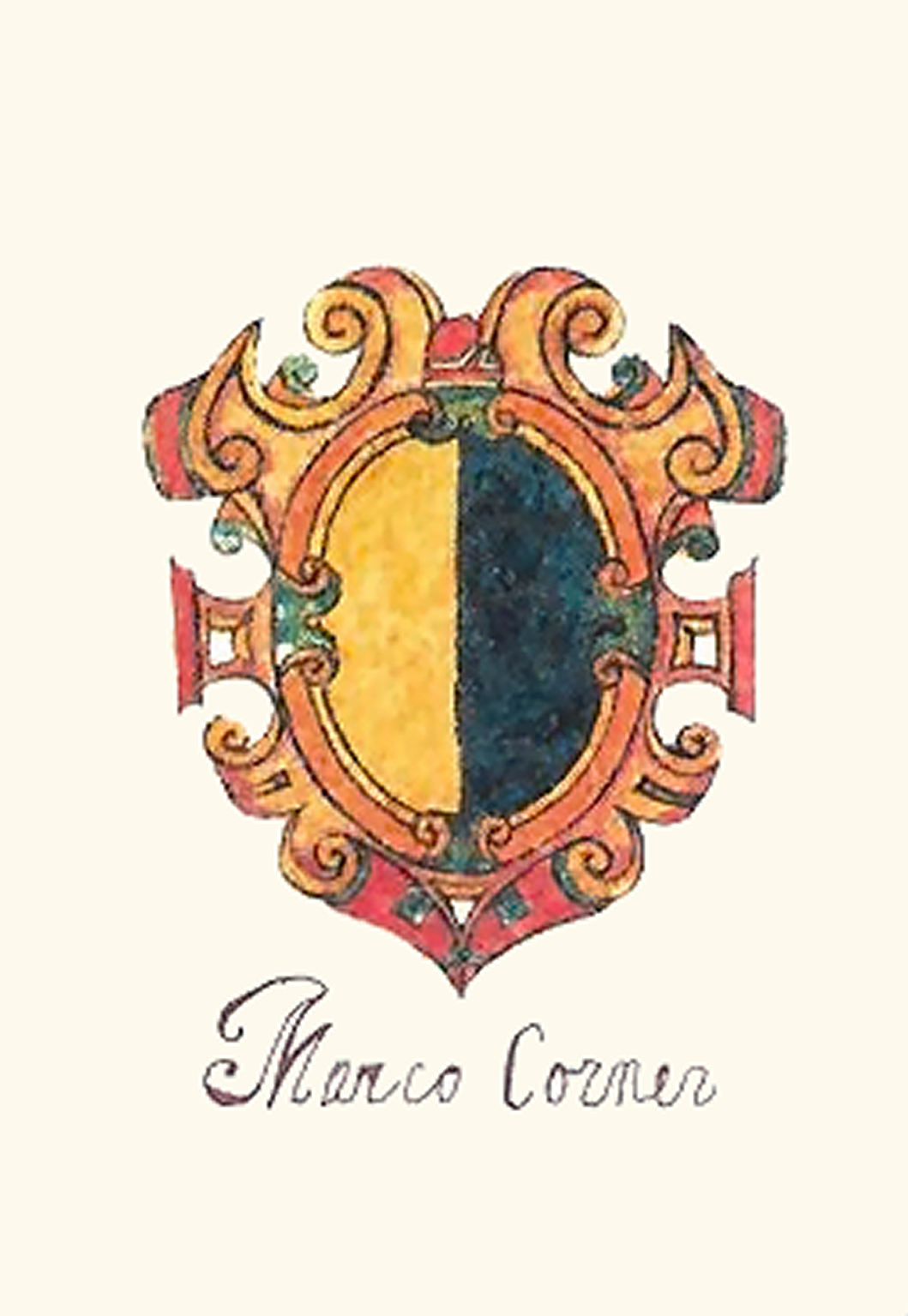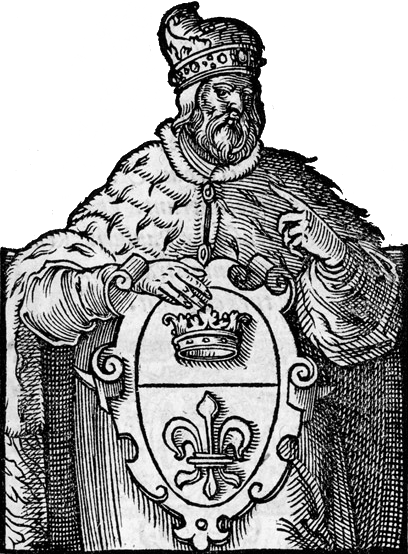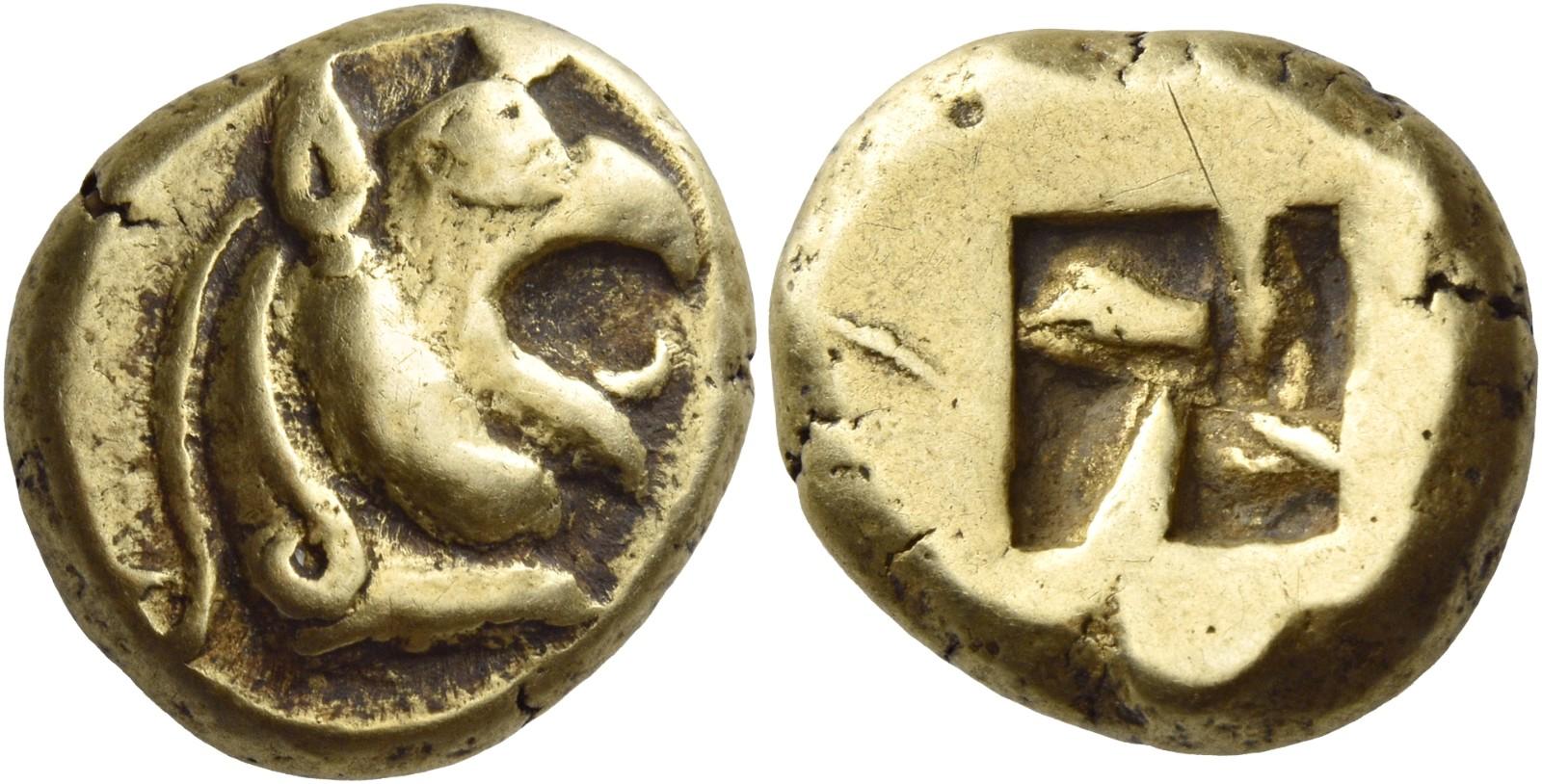|
Marco Cornaro
Marco Cornaro (c. 1286 – 13 January 1368), also known as Marco Corner, was the 59th doge of Venice, ruling between 1365 and 1368. His brief reign saw the loss of Venetian territory to Genoa and the Ottoman Empire, though Venice was to enjoy economic growth during this time. Biography The Cornaro family to which the future doge was born was one of Venice's oldest, its lineage traceable to the Romans. It was also one of the richest, having achieved this status from money-lending. The Cornaros would produce three more doges in the 17th and 18th centuries. Marco Cornaro's first marriage was to Giovanna Scrovegni of Padua, with whom he had three sons and two daughters. His second marriage was to a woman named Caterina about whom little is known other than her low social status made his later election to the doge difficult. Dogaressa Caterina was somewhat mocked for her simple habits, which was not seen as suitable for the rank of a dogaressa, but he always defended her and called ... [...More Info...] [...Related Items...] OR: [Wikipedia] [Google] [Baidu] |
Doge Of Venice
The Doge of Venice ( ; vec, Doxe de Venexia ; it, Doge di Venezia ; all derived from Latin ', "military leader"), sometimes translated as Duke (compare the Italian '), was the chief magistrate and leader of the Republic of Venice between 726 and 1797. Doges of Venice were elected for life by the Venetian nobility. The ''doge'' was neither a duke in the modern sense, nor the equivalent of a nobility, hereditary duke. The title "doge" was the title of the senior-most elected official of Republic of Venice, Venice and Republic of Genoa, Genoa; both cities were republics and elected doges. A doge was referred to variously by the titles "My Lord the Doge" ('), "Most Serene Prince" ('), and "Serene Highness, His Serenity" ('). History of the title Byzantine era The office of doge goes back to 697. The first historical Venetian doge, Orso Ipato, Ursus, led a revolt against the Byzantine Empire in 726, but was soon recognised as the () and (a honorific title derived from the Greek w ... [...More Info...] [...Related Items...] OR: [Wikipedia] [Google] [Baidu] |
Lorenzo Celsi
Lorenzo Celsi (born Venice, c. 1310 – died there 18 July 1365) was a Venetian statesman who served as the 58th Doge of Venice, from 16 July 1361 until his death. Biography He was the son of a rich Celsi family, and was previously noted for leading a flotilla against Genoa to help preserve Venetian interests. He was married to Marchesina Ghisi. During his reign, Celsi confronted the revolt of St. Tito in Crete, a rebellion that overthrew the official Venetian authorities and attempted to create an independent state. Celsi was succeeded as Doge by Marco Cornaro Marco Cornaro (c. 1286 – 13 January 1368), also known as Marco Corner, was the 59th doge of Venice, ruling between 1365 and 1368. His brief reign saw the loss of Venetian territory to Genoa and the Ottoman Empire, though Venice was to enjoy eco .... References 1310s births 1365 deaths 14th-century Doges of Venice {{Italy-politician-stub ... [...More Info...] [...Related Items...] OR: [Wikipedia] [Google] [Baidu] |
House Of Cornaro
The House of Cornaro or Corner are a family in Venice who were patricians in the Republic of Venice and included many Doges and other high officials. The name ''Corner'', originally from the Venetian dialect, was adopted in the eighteenth century. The older standard Italian ''Cornaro'' is no longer common in Italian sources referring to earlier members of the family, but remains so in English. History The family and name Cornaro are said to descend from the gens Cornelia, a patrician family of Ancient Rome. The Cornari were among the twelve tribunal families of the Republic of Venice and provided founding members of the Great Council in 1172. In the 14th century, the family separated into two distinct branches, Cornaro of the Great House and Cornaro Piscopia. The latter name derived from the 1363 grant of the fief of Piscopia in the Kingdom of Cyprus to Federico Cornaro. When Caterina Cornaro married king James II of Cyprus in 1468, the Lusignan royal arms were added to ... [...More Info...] [...Related Items...] OR: [Wikipedia] [Google] [Baidu] |
1368 Deaths
Year 1368 ( MCCCLXVIII) was a leap year starting on Saturday (link will display the full calendar) of the Julian calendar. Events January–December * January 23 – The Hongwu Emperor (Zhu Yuanzhang) establishes the Ming Dynasty in China, after the disintegration of the Mongol Yuan Dynasty. He immediately orders every county magistrate to set up four granaries, and halts government taxation on books. * March 29 – Emperor Chōkei accedes to the throne of Japan. Date unknown * The Revolt of Saint Titus against rule of the Republic of Venice in the Kingdom of Candia (island of Crete) ends in failure. * Durrës, the second-largest city in modern-day Albania (at this time known as Dyrrhachium), is captured from the Angevins by Karl Thopia, a powerful feudal prince and warlord. * Lațcu, son of Bogdan I, deposes his nephew Petru I, and becomes voivode of Moldavia. * Timur ascends the throne of Samarkand (in modern-day Uzbekistan). * Maha Thammaracha II become ... [...More Info...] [...Related Items...] OR: [Wikipedia] [Google] [Baidu] |
1286 Births
1 (one, unit, unity) is a number representing a single or the only entity. 1 is also a numerical digit and represents a single unit of counting or measurement. For example, a line segment of ''unit length'' is a line segment of length 1. In conventions of sign where zero is considered neither positive nor negative, 1 is the first and smallest positive integer. It is also sometimes considered the first of the infinite sequence of natural numbers, followed by 2, although by other definitions 1 is the second natural number, following 0. The fundamental mathematical property of 1 is to be a multiplicative identity, meaning that any number multiplied by 1 equals the same number. Most if not all properties of 1 can be deduced from this. In advanced mathematics, a multiplicative identity is often denoted 1, even if it is not a number. 1 is by convention not considered a prime number; this was not universally accepted until the mid-20th century. Additionally, 1 is the s ... [...More Info...] [...Related Items...] OR: [Wikipedia] [Google] [Baidu] |
Andrea Contarini
Andrea Contarini was doge of Venice from 1367 to 1382. He served as doge during the War of Chioggia, which was fought between the Venetian Republic and the Republic of Genoa. Contarini was noted for his personal bravery during the war. He also led a fundraising effort in which he personally liquidated his fortune for the country. Though in his seventies, he took personal command of the Venetian Navy (with Admiral Vettor Pisani as his chief of staff) and led troops in the critical Battle of Chioggia. Notes References * 14th-century Doges of Venice Andrea Andrea is a given name which is common worldwide for both males and females, cognate to Andreas, Andrej and Andrew. Origin of the name The name derives from the Greek word ἀνήρ (''anēr''), genitive ἀνδρός (''andrós''), that ref ... Republic of Venice admirals People of the War of Chioggia {{Italy-noble-stub ... [...More Info...] [...Related Items...] OR: [Wikipedia] [Google] [Baidu] |
List Of Doges Of Venice
The following is a list of all 120 of the Doges of Venice ordered by the dates of their reigns. For more than 1,000 years, the chief magistrate and leader of the city of Venice and later of the Most Serene Republic of Venice was styled the ''Doge'', a rare but not unique Italian title derived from the Latin Dux. Doges of Venice were elected for life by the city-state's aristocracy. The Venetian combination of elaborate monarchic pomp and a republican (though "aristocratic") constitution with intricate checks and balances makes "''La serenissima''" (Venice) a textbook example of a crowned republic. Despite the great power given to them, the Venetian Doges were restricted by law (unlike the Doges of the Republic of Genoa) to spend the rest of their lives inside the Doge's Palace complex and St Mark's Basilica, occasionally leaving for diplomatic reasons. Byzantine period Magister militum per Venetiae Ducal period Republican period Legacy After the Fall of the Republic of ... [...More Info...] [...Related Items...] OR: [Wikipedia] [Google] [Baidu] |
Basilica Dei Santi Giovanni E Paolo (Venice)
The Basilica dei Santi Giovanni e Paolo, known in Venetian as San Zanipolo, is a church in the Castello ''sestiere'' of Venice, Italy. One of the largest churches in the city, it has the status of a minor basilica. After the 15th century the funeral services of all of Venice's doges were held here, and twenty-five doges are buried in the church. Description The huge brick edifice was designed in the Italian Gothic style, and completed in the 1430s. It is the principal Dominican church of Venice, and as such was built to hold large congregations. It is dedicated to John and Paul, not the Biblical Apostles of the same names, but two obscure martyrs of the Early Christian church in Rome, whose names were recorded in the 4th century but whose legend is of a later date. In 1246, Doge Jacopo Tiepolo donated some swampland to the Dominicans after dreaming of a flock of white doves flying over it. The first church was demolished in 1333, when the current church was begun. It was not ... [...More Info...] [...Related Items...] OR: [Wikipedia] [Google] [Baidu] |
Piazza San Marco
Piazza San Marco (; vec, Piasa San Marco), often known in English as St Mark's Square, is the principal public square of Venice, Italy, where it is generally known just as ''la Piazza'' ("the Square"). All other urban spaces in the city (except the Piazzetta and the Piazzale Roma) are called ''campi'' ("fields"). The Piazzetta ("little Piazza/Square") is an extension of the Piazza towards San Marco basin in its southeast corner (see plan). The two spaces together form the social, religious and political centre of Venice and are commonly considered together. This article relates to both of them. A remark usually attributed (though without proof) to Napoleon calls the Piazza San Marco "the drawing room of Europe". Description The square is dominated at its eastern end by St Mark's Basilica. It is described here by a perambulation starting from the west front of the church (facing the length of the piazza) and proceeding to the right. The church is described in the article ... [...More Info...] [...Related Items...] OR: [Wikipedia] [Google] [Baidu] |
Doge's Palace, Venice
The Doge's Palace ( it, Palazzo Ducale; vec, Pałaso Dogal) is a palace built in Venetian Gothic style, and one of the main landmarks of the city of Venice in northern Italy. The palace was the residence of the Doge of Venice, the supreme authority of the former Republic of Venice. It was built in 1340 and extended and modified in the following centuries. It became a museum in 1923 and is one of the 11 museums run by the Fondazione Musei Civici di Venezia. History In 810, Doge Agnello Participazio moved the seat of government from the island of Malamocco to the area of the present-day Rialto, when it was decided a ''palatium duci'' (Latin for "ducal palace") should be built. However, no trace remains of that 9th-century building as the palace was partially destroyed in the 10th century by a fire. The following reconstruction works were undertaken at the behest of Doge Sebastiano Ziani (1172–1178). A great reformer, he would drastically change the entire layout of the St. M ... [...More Info...] [...Related Items...] OR: [Wikipedia] [Google] [Baidu] |
Infidel
An infidel (literally "unfaithful") is a person accused of disbelief in the central tenets of one's own religion, such as members of another religion, or the irreligious. Infidel is an ecclesiastical term in Christianity around which the Church developed a body of theology that deals with the concept of infidelity, which makes a clear differentiation between those who were baptized and followed the teachings of the Church versus those who are outside the faith. The term ''infidel'' was used by Christians to describe those perceived as the enemies of Christianity. After the ancient world, the concept of otherness, an exclusionary notion of the outside by societies with more or less coherent cultural boundaries, became associated with the development of the monotheistic and prophetic religions of Judaism, Christianity, and Islam (cf. pagan). In modern literature, the term infidel includes in its scope atheists, polytheists, animists, heathens, and pagans. A willingness to ident ... [...More Info...] [...Related Items...] OR: [Wikipedia] [Google] [Baidu] |
Phocaea
Phocaea or Phokaia (Ancient Greek: Φώκαια, ''Phókaia''; modern-day Foça in Turkey) was an ancient Ionia Ionia () was an ancient region on the western coast of Anatolia, to the south of present-day Izmir. It consisted of the northernmost territories of the Ionian League of Greek settlements. Never a unified state, it was named after the Ionian ...n Ancient Greece, Greek city on the western coast of Anatolia. Colonies in antiquity, Greek colonists from Phocaea founded the colony of Massalia (modern-day Marseille, in France) in 600 BC, Emporion (modern-day Empúries, in Catalonia, Spain) in 575 BC and Elea (modern-day Velia, in Campania, Italy) in 540 BC. Geography Phocaea was the northernmost of the Ionian cities, on the boundary with Aeolis. It was located near the mouth of the river Hermus (now Gediz River, Gediz), and situated on the coast of the peninsula separating the Gulf of Cyme (Aeolis), Cyme to the north, named for the largest of the Aeolis, ... [...More Info...] [...Related Items...] OR: [Wikipedia] [Google] [Baidu] |







